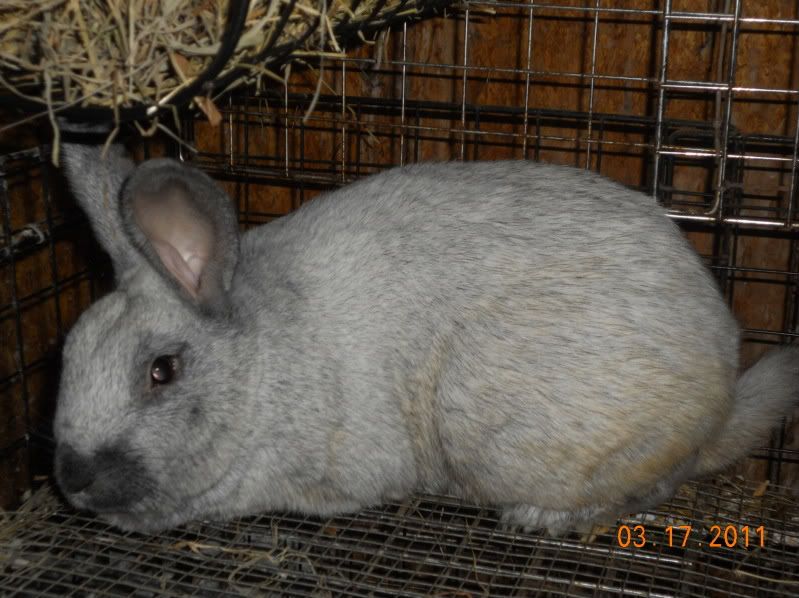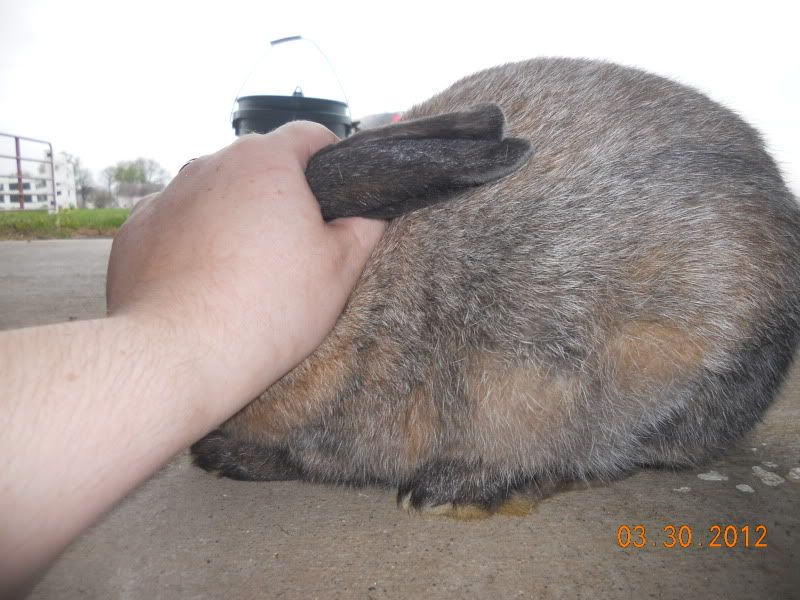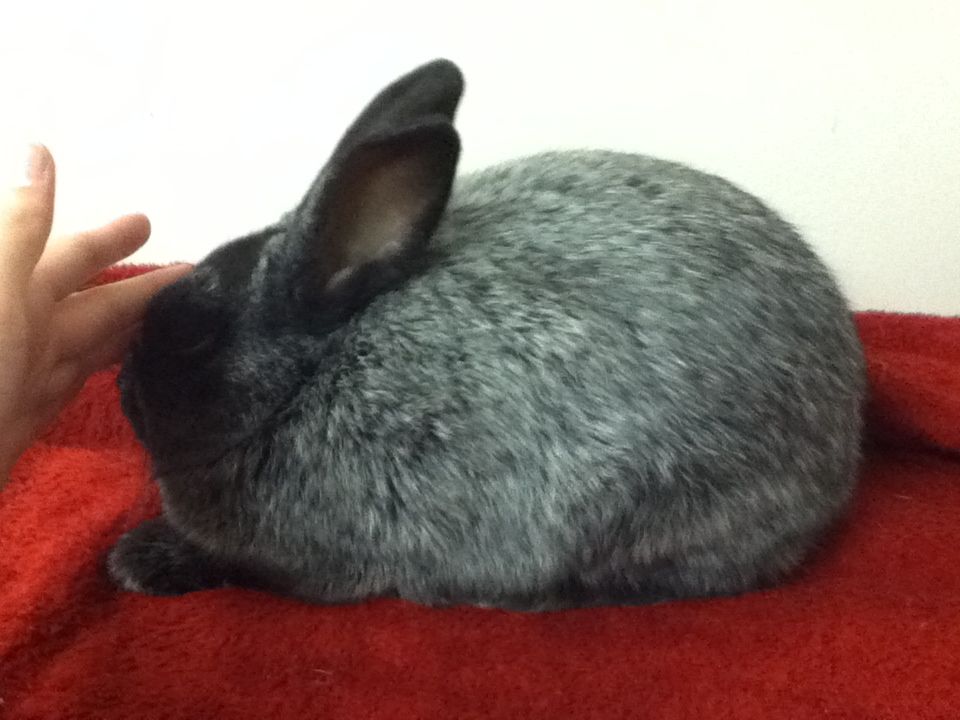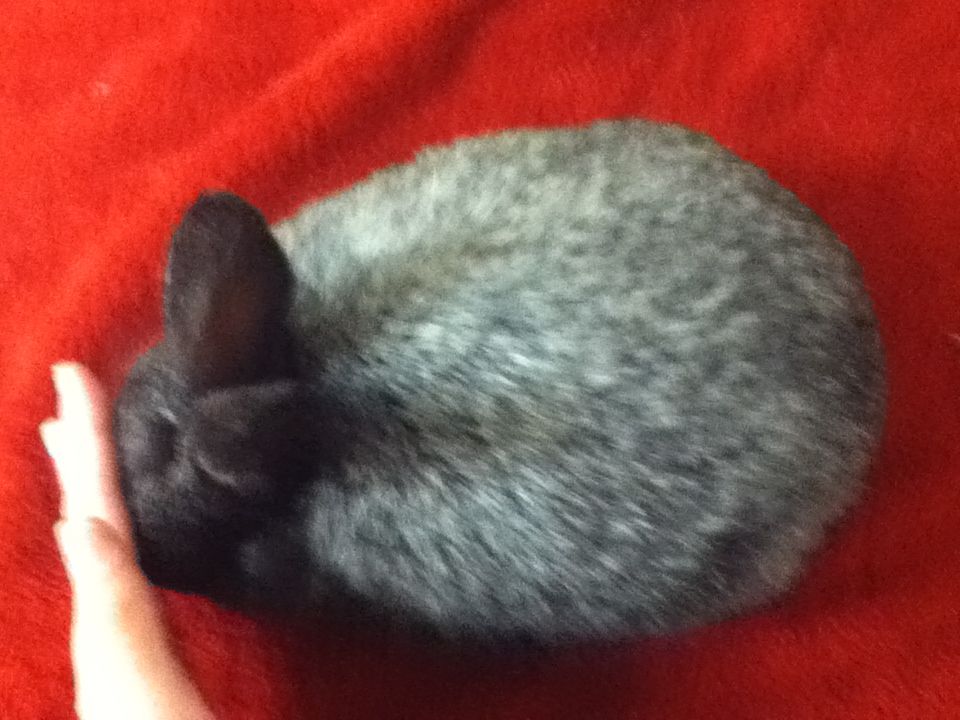So...what does everyone know about this gene?
It's supposed to be recessive, butit crops up in first generation crosses. (correction, it seems to crop up visually in first gen crosses)
for example SF X mutt with no silvered rabbits in background whatsoever:

The rabbit is 8 weeks old.
Is this the result of one copy of si silvering, or a lot of random white ticking that may have been selected for along with the silvering gene in SF rabbits?
Another interesting note. Wraith here,(the second rabbit pictured) is a purebred SF as far as anyone knows.
I just see a few stray white hairs.
I was able to get him as a cull rabbit from rothrabbits. I'd like to note that this rabbit's whole line was culled and is not at all representative of what they sell.
He doesn't display any silvering that I can see (I was very lucky, and am grateful that they allowed me to buy him for one of my mix breed projects, since his father bred free of steel, so I can get agouti based 1/2 foxes, and breed back to concentrate the amount of fluffy! yay)

I don't have his exact birthday, but I'm pretty sure he's between 3 and 4 months old.
Anyway, would it be safe to assume he isn't carrying ANY copies of the si silvering gene?
Or perhaps he has an invisible copy that will pop up later when his kits are crossbred?
It's supposed to be recessive, but
for example SF X mutt with no silvered rabbits in background whatsoever:
The rabbit is 8 weeks old.
Is this the result of one copy of si silvering, or a lot of random white ticking that may have been selected for along with the silvering gene in SF rabbits?
Another interesting note. Wraith here,(the second rabbit pictured) is a purebred SF as far as anyone knows.
I just see a few stray white hairs.
I was able to get him as a cull rabbit from rothrabbits. I'd like to note that this rabbit's whole line was culled and is not at all representative of what they sell.
He doesn't display any silvering that I can see (I was very lucky, and am grateful that they allowed me to buy him for one of my mix breed projects, since his father bred free of steel, so I can get agouti based 1/2 foxes, and breed back to concentrate the amount of fluffy! yay)
I don't have his exact birthday, but I'm pretty sure he's between 3 and 4 months old.
Anyway, would it be safe to assume he isn't carrying ANY copies of the si silvering gene?
Or perhaps he has an invisible copy that will pop up later when his kits are crossbred?









